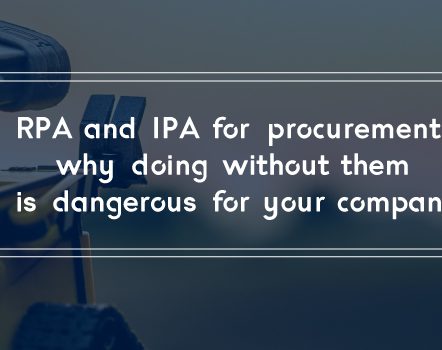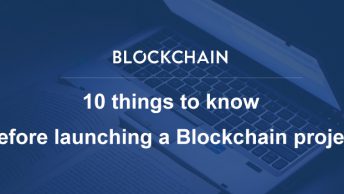As the adoption of artificial intelligence stays weak, its natural child, RPA (Robotic Process Automation) knows an exponential grows with more than 50% of adoption rate, projected to 72% by the end of 2021. It is indeed the IT sector that growths the more quickly.
When we think about RPA, its application to the purchasing unit is not the one that comes spontaneously to mind. Excepted for a classical utilization case: the automated reconciliation between invoices, orders, and products references one.
RPA, which is from now on mature, treats with constancy all repetitive and stable tasks, no matter what the volume of data. With however the limitation that it is not a process that applies only to structured datum. This limit of “classical RPA” is on its way to being lifted thanks to the addition of artificial intelligence, in order to go from the simple automated process between applications to a “Cognitive RPA”.
RPA + AI: a quantum jump equivalent to Big Data introduction
Baptized IPA for Intelligent Procurement Automation, these new robots see themselves progressively be provided with new competencies: image recognition, voice and sounds recognition, semantic analyze (NLP), analysis of feelings and a learning competence, thus an entire panoply offered by artificial intelligence and machine Learning various layers.
This transition from simple treatment to an intelligent one radically modifies perspectives. The most evident gap being going from the structured data processing to the unstructured data one.
A revolution equivalent to the one known by databases with the advent of Big Data via Hadoop!
With more than 80% of a hidden or unstructured datum to be processed by the purchasing unit, these evolutions foresee for the trade well more seducing scenarios rather than the only and without added value simple tasks automatization. Being capable of automatize processes are focused on content with learning capabilities almost give vertigo regarding the filed of possibilities.
Class-C purchases, calls for tenders, conformity rules : the IPA becomes an intelligent assistant (AI)
Hypothesizes of using cases are abundant. The most evident is one of the automatizations of class-C purchases. With a classic RPA, this automatization presents numerous dysfunction risks for a lack of well-structured datum. A simple change of nomenclature and everything stops. With a cognition capacity, it is possible to imagine product recognition, for example, a pencil, and in case of bad referencing, research by an image of the right product in order to sustain the process. Provided that this action has been predicted et programmed in coupling with RPA.
Learning the capability of Cognitive RPA goes much further in terms of possibilities and encroaches on more “experts” lands. As an example, we could imagine a sequence between purchases volumes’ classification and their optimization by successive requests, or moreover the intelligent duplication of calls for tenders dedicated to intellectual services by their arrival to the deadline. Need more examples?
- The respect of the purchasing politic: an intelligent robot will know how to extract transactions and will compare them with purchasing politics not only at a specific time but also during the time by taking into account the evolutions of it.
- The optimized year-end discounts management thanks to a calculation and a dynamic proposition to the to-be-preferred buyer or prescriber of contracts and providers in order to activate year-end discounts planned into the contract.
These scenarios prove a gradation in the evolution of intelligent robots that are extending from the simple processes automatization with an RPA based on structured datum to the implementation of negotiation chatbots. These increments also go through the machine learning utilization in order to predict or prevent risks and the adoption of Cognitive RPA that takes into account every type of datum (structured, semi-structured and unstructured).
An operational gain and a trade benefit
For the purchasing unit benefits from using IPA, RPA, and Cognitive RPA exceed the simple functional immediate perimeter. For instance, 60% of the time is dedicated to the realization of weak-added-value administrative tasks. By reducing this time, the allocation of resources could be re-think in order to be re-distributed to more pertinent tasks. Being dispensed of ungrateful tasks and focus on the core business for the new collaborators permit to make sense and to support the professional interest linked to the obtention of better sourcing or to the development of the provider-relation. In these times of recruitment-tensions, the argument is forceful.
Beyond, gain brought by the RPA and IPA traduces itself immediately by an increase of the company’s gross margin thanks to multiple optimization levers available from now on. Thus the goal of any purchasing service.
More than 50% of company have adopted RPA, by the only competitive slope, doing without these technologies equals to stay on the numeric transformation’s roadside.
External contribution proposed by Jean Luc Marini, Jeroon Pedurupillai and Benjamin Verdier (Axys Consultants)
Translated from Actu iA.





